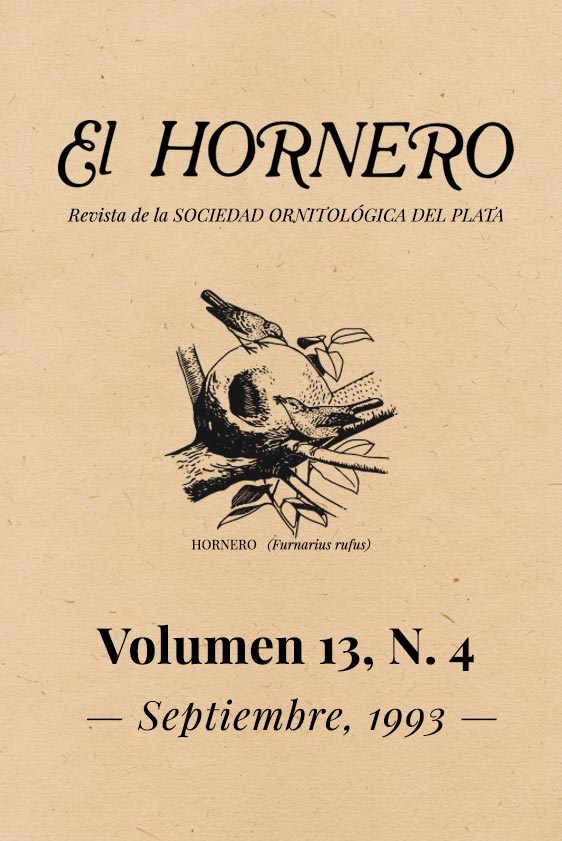Abstract
We report the diet of the Austral Pygmy-Owl (Glaucidium nanum) at a quantitative level, and analyze it by season in two consecutive years in a locality near Illapel, IV Region, Chile. We compared the frequency distribution of different prey in the diet of the owl with their respective abundances in the field. Among 311 pellets we found 670 prey items. Another 110 prey were found as remains. On average, birds made up 33,2% of the diet by number, followed in decreasing order by small mammals (31,9%), insects (30,9%), reptiles (2,4%) and arachnids (1,6%). We detected large variability in the diet composition between years and between seasons. For the same season in two different years, the diet of the owl changed in the field, so that interannual differences may be explained by changes in the vulnerability of certain prey due to climatic extremes. By relating the abundance of mammalian prey with their respective consumption by the owl, it appears that in some periods the owl behaves as an opportunistic, and in the others as a selective predator. According to the known daily activity periods of prey, the Pygmy-Owl hunts both in the daytime and during the night.
References
Barros,R.1950.Lahistoriadelchucho,Glaucidiumna-num(King).RevistaUniversitaria(Univ.Católicade.Chile)35:17-30.
DiCastri,F.y E.R.Hajek.1976.BioclimatologíadeChi-le.VicerrectoríaAcadémicadelaUniversidadCatóli-cadeChile.
Housse,R.1945.LasavesdeChileensuclasificaciónmoderna:suviday costumbres.EdicionesdelaUni-versidaddeChile,Santiago.
Humphrey,P.S.,D.Bridge,P.W.Reynolds&R.T.Peter-son.1970. BirdsofIslaGrande(TierradelFuego).Mus.Nat.Hist., Univ.ofKansas,Lawrence,Kan-sas.
lriarte,J.A.,L.C.Contreras&F.M.Jaksic.1989.Along-termstudyofa small-mammalassemblageinthecentralChileanmatorral.J.Mammalogy70:79-87.

This work is licensed under a Creative Commons Attribution-NonCommercial 4.0 International License.





